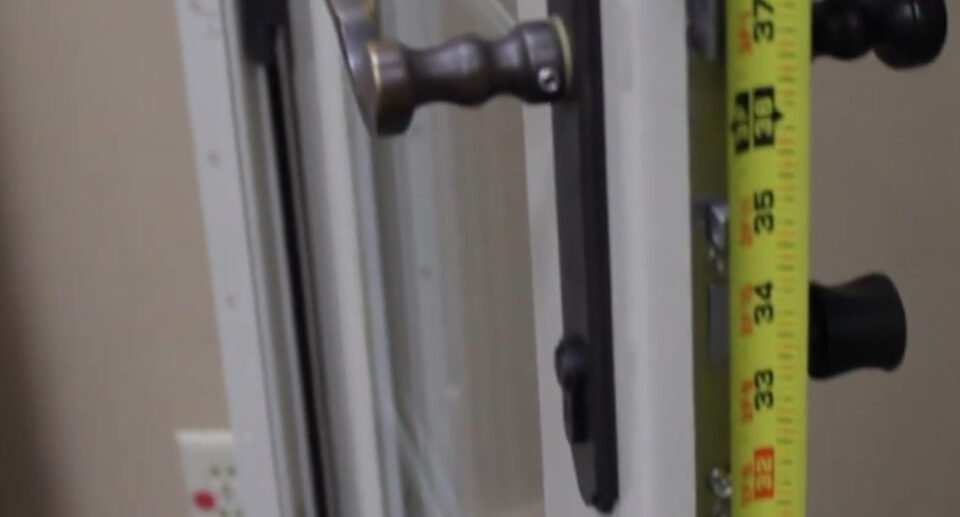How to Seal a Garage Door: Tips and Techniques With Video

Sealing a garage door is an essential task that every homeowner should consider. A poorly sealed garage door can lead to drafts, allowing air and moisture to enter the garage and the house.
In addition to energy efficiency, sealing a garage door can also help prevent pests, insects, and rodents from entering your garage.
There are several ways to seal a garage door. These include weatherstripping, threshold seals, and bottom seals.
Weatherstripping is an effective way to seal the gaps between the garage door panels. Meanwhile, threshold seals help seal the gap between the garage door and the floor. Lastly, bottom seals are used to seal the bottom of the garage door, preventing drafts and pests from entering the garage.
Depending on the type of garage door and the level of sealing required, homeowners can choose the right combination of these sealing methods to ensure maximum energy efficiency.
Sealing a garage door is a DIY project that can be done with the right tools and materials. Homeowners can purchase weatherstripping, threshold seals, and bottom seals from their local hardware stores or online retailers.
With the right guidance and proper installation, homeowners can seal their garage doors. This will help improve the energy efficiency of their homes while saving money on their energy bills.
Understanding Garage Door Seals
Garage door seals are an essential part of maintaining the integrity of your garage. They help to keep out unwanted pests, dust, and debris, and also prevent drafts and water from entering your garage. In this section, we will discuss the types of seals available and the importance of sealing your garage door.
Types of Seals
There are several types of seals available for your garage door. The most common types are bottom seals, threshold seals, side seals, and top seals.
Bottom seals are installed on the bottom of the garage door and help to seal the gap between the door and the floor. Meanwhile, threshold seals are installed on the floor in front of the garage door and help to seal the gap between the door and the floor.
Side seals are installed on the sides of the garage door and help to seal the gap between the door and the frame. Lastly, top seals are installed on the top of the garage door and help to seal the gap between the door and the frame.
Weatherstripping kits are also available for garage doors. These kits include all the necessary materials to seal the gaps around your garage door. They come in different sizes and types, so it is important to choose the one that is right for your garage door.
Importance of Sealing
Sealing your garage door is important for several reasons. First, it helps to keep out unwanted pests, dust, and debris. This is especially important if you use your garage for storage.
Second, it helps to prevent drafts and water from entering your garage. This can help to keep your garage warmer in the winter and cooler in the summer.
Third, it can help to improve the energy efficiency of your home. By sealing the gaps around your garage door, you can prevent air from escaping, which can help to reduce your energy bills.
Preparing for Installation
Tools and Materials
Before installing a garage door seal, make sure you have the right tools and materials. The following tools and materials are necessary for the installation process:
| Tools | Materials |
|---|---|
| Utility knife | Garage door seal |
| Saw | Adhesive |
| Measuring tape | Caulk |
| Hammer | Nails |
| Screwdriver | Screws |
Make sure to have all the necessary tools and materials before beginning the installation process. This will ensure a smooth and efficient installation.
Measuring and Cutting
The first step in preparing for installation is to measure and cut the garage door seal to the correct size.
Measure the width of the garage door and add an extra inch to ensure a proper fit. Then, cut the garage door seal to the appropriate length using a saw or utility knife.
Make sure to cut the garage door seal slightly longer than the width of the garage door. This will allow for a snug fit and ensure that the seal is properly secured.
Installation Process
When sealing a garage door, it’s important to follow the right steps to ensure the job is done correctly. The installation process involves three main steps: installing bottom seals, sealing the sides, and installing the top seal and threshold.
Installing Bottom Seals
The first step in sealing a garage door is to install bottom seals. This helps to keep out drafts, debris, and pests. The most common types of bottom seals are vinyl seals, rubber seals, and brush seals.
To install a bottom seal, start by measuring the length of the bottom of the garage door and cut the seal to the appropriate length. Then, slide the seal into the retainer at the bottom of the door, starting at one end and working your way across. Make any necessary adjustments to ensure a snug fit along the floor.
Sealing the Sides
Sealing the sides of a garage door is also important to prevent drafts and debris from entering. Weather stripping is the most common material used for sealing the sides of a garage door.
To seal the sides, start by cleaning the area where the weather stripping will be installed. Then, measure the length of the sides and cut the weather stripping to the appropriate length. Attach the weather stripping to the sides of the garage door using adhesive or screws.
Top Seal and Threshold
The final step in sealing a garage door is to install the top seal and threshold. This helps to prevent drafts and water from entering the garage. The most common materials used for the top seal and threshold are rubber and vinyl.
To install the top seal and threshold, start by measuring the length of the top of the garage door and the width of the threshold. Then, cut the seal and threshold to the appropriate length and width.
Attach the seal to the top of the garage door using adhesive or screws. Then, install the threshold at the bottom of the garage door using screws.
Maintenance and Troubleshooting
Regular Maintenance
Regular maintenance of a garage door seal is essential to keep it functioning efficiently. Homeowners should inspect their garage door seals regularly to ensure that they are in good condition.
They should look for signs of wear and tear, such as rips, cracks, and water damage. If any of these issues are present, they should be addressed immediately.
Regular cleaning of the seals with soapy water and a soft brush can also help to keep them in good condition.
Repair and Replacement
If a garage door seal is damaged or worn out, it may need to be repaired or replaced.
Homeowners should first attempt to repair the seal by adjusting it to ensure that it is properly aligned. If the seal is beyond repair, it should be replaced. Replacement seals can be purchased at most home improvement stores.
When replacing a garage door seal, homeowners should ensure that they purchase the correct size and type of seal for their garage door. They should also follow the manufacturer’s instructions carefully to ensure that the seal is installed correctly.
Conclusion
Sealing a garage door is a necessary step to protect the interior of the garage from the elements, pests, and other intruders. It also helps maintain the temperature inside the garage, which can be important if the garage is used as a workspace or storage area.
There are several methods and materials that can be used to seal a garage door. These include weatherstripping, threshold seals, and bottom seals. The choice of method and material will depend on the type of garage door, the climate, and the intended use of the garage.
When sealing a garage door, it is important to follow the manufacturer’s instructions and use the appropriate tools and materials. A good seal should be flush against the garage door and the floor, without any gaps or spaces.
Regular maintenance and inspection of the garage door seal can help ensure its effectiveness and longevity. It is recommended to inspect the seal at least once a year and replace if necessary.
Overall, sealing a garage door is a simple and effective way to protect the garage and its contents. By following the steps and tips outlined in this article, anyone can seal their garage door with confidence and ease.

Hello, I’m Keith Jones. I’m the author and head of content here of door and window guide. I’ve been in the window and door industry for over 10 years in the UK and North America. I’ve had quite a few roles during my career mainly in Worldwide sales. I’m now semi retired so I thought I’d put my knowledge to good use educating people about all they might need to know about door and window related topics.






